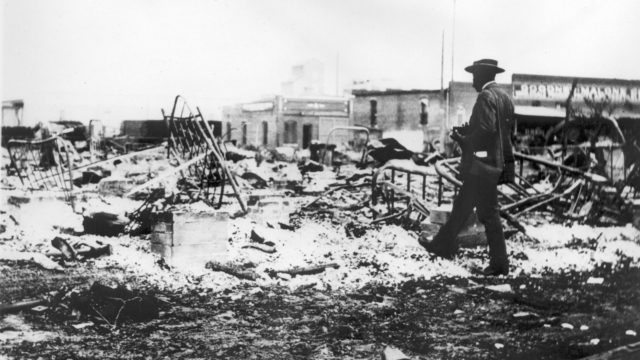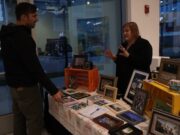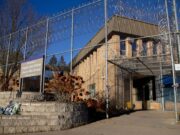
(CNN) — A district court judge Monday could determine the fate of a reparations lawsuit filed by survivors and descendants of the 1921 Tulsa Race Massacre and whether the suit will go forward to trial.
The lawsuit was filed in March 2021 and looks to not only set the record straight on what took place between May 31 and June 1, 1921, but also create a special fund for survivors and descendants of the massacre that left at least 300 Black people dead and the once-booming neighborhood of Greenwood destroyed.
On top of that, attorneys for the plaintiffs are racing against the clock. Three of their clients are more than 100 years old — Viola Fletcher and Lessie Benningfield Randle are both 107 and Hughes Van Ellis is the youngest at 101. This could be their last chance to get some semblance of justice.
Damario Solomon-Simmons, an attorney for the plaintiffs, told CNN he received a text message from Van Ellis — also known as Uncle Red — which read:
“News flash, communicating with any of the other attorneys” — talking about the defendants — “Please let them know that they’re trying to wait out the three survivors. We’re not going anywhere with three exclamation points.”
Judge Caroline Wall’s decision on the future of the case, which has been 100 years in the making, will ultimately hold America accountable for a previous injustice and could lay the groundwork for similar cases in the future, Solomon-Simmons said.
“I just cannot wait to stand in front of Judge Caroline Wall and explain to her, very clearly why, (with) the facts and the law are on our side, we should be able to move forward,” Solomon-Simmons said. “We’re not asking her nor is she required to decide if we win our case or not. All we’re asking for is the opportunity to move forward along this case, so we can prove what we’ve said we can prove.”
Monday’s hearing is expected to last hours, he said.
Lawsuit names 7 defendants
The lawsuit names 11 plaintiffs, including survivors and relatives of survivors. Seven total defendants are named, including the city of Tulsa, Oklahoma Military Department and the Tulsa Development Authority.
Six months after the lawsuit was initially filed, some defendants in the case, including the Board of County Commissioners and Tulsa Metropolitan Area Planning Commission, filed motions to dismiss. The defendants’ oppositions included arguments that the case lacks standing because some plaintiffs have not proven they suffered concrete personal injury and that their alleged injuries could not be remedied by the court. A hearing was held in September, but no decision was made at the time.
A judge gave the plaintiffs until January 31 to present new arguments and gave the defendants until March to respond, Solomon-Simmons said. CNN has reached out to the defendants for comment.
“We asked her for another hearing day because mother (Viola) Fletcher turns 108 on May 10, and we asked Judge Wall and … we said ‘look, this issue needs to be resolved before this lady turns 108 years old.’ And that’s why she granted that hearing,” he said.
The lawsuit is also looking to officially declare that the actions of that day and the century that followed “created a public nuisance” for the plaintiffs and their descendants as defined by Oklahoma law.
“We’re confident we’ll be able to prove that. We’re confident that if we go through discovery, we’ll gather evidence that we’ll show that, but we need the opportunity to do that,” Solfanelli said.
The next steps after Monday’s hearing — should it go forward — would be the discovery stage or the gathering of more evidence, both attorneys told CNN.
“And that’s why this is so important. There’s so much we don’t know about the massacre. There’s so much, we don’t know about the ongoing harm,” Solomon-Simmons said.
Race massacre’s effects linger 100 years later
There have been efforts in recent years to raise awareness about the massacre.
The 2018 news that victims’ bodies might have been found, along with plot lines from two popular TV shows — HBO’s “Lovecraft Country” and “Watchmen” — helped to invigorate interest in this dark period of American history. (CNN and HBO have the same parent company.)
Many of the details about what happened that spring have been lost to time, though.
What is known is that Tulsa at the time had something most cities did not: The Greenwood District was a thriving Black hub of commerce, home to multiple millionaires and about 300 Black-owned businesses. It is colloquially known as Black Wall Street.
The events leading up to the massacre began on May 30, 1921, when Dick Rowland, a 19-year-old Black shoe shiner, ran from an elevator in a downtown building after the elevator’s teen operator let out a scream. Rumors of a rape then circulated, Rowland was arrested, and White Tulsans formed a lynch mob.
Black Tulsans arrived at the jail to defend Rowland, scuffles ensued, a gun went off, and as then-Sheriff William McCullough told Literary Digest, “All hell broke loose.”
The mob laid waste to about 35 blocks within 16 hours, arresting thousands of Black residents, while robbing, beating and killing others. Historic photos show entire blocks gutted by flame and Black people lying in the street.
Exacerbating matters were insurance companies that denied many claims for what today would be tens of millions of dollars in property damage, including the destruction of two Black hospitals and 1,256 residences, according to the Greenwood Cultural Center.
“There is still no hospital in north Tulsa to today. So that’s 101 years that that hospital has never been rebuilt,” Solfanelli said. “When you think about the generational wealth that was lost when Greenwood was lost, then I think people can step back and say, wait a minute, imagine if that happened to my great-grandparents.”
Solomon-Simmons told CNN what makes Greenwood special isn’t its destruction, Black communities have endured similar events throughout history.
“It’s special because of the size and scope of the destruction. It’s special because we have so much documentation, we have actual video, we have hundreds of pictures, we have hundreds of insurance claims that were not paid, and we have three living survivors,” he said. “If Black people can’t win this, how can we win?”
The-CNN-Wire
™ & © 2022 Cable News Network, Inc., a WarnerMedia Company. All rights reserved.

































